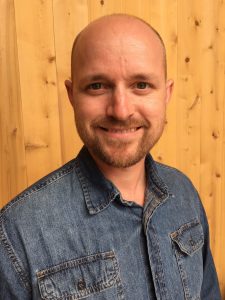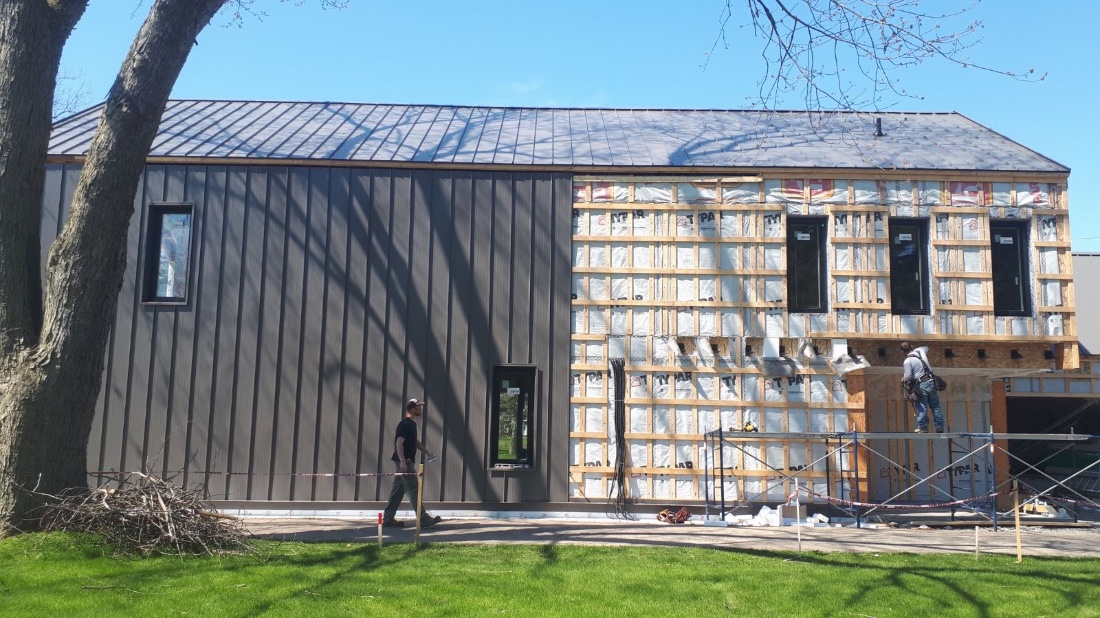The Orillia-based Lowry Building Co. focuses on sustainable, environmentally-friendly building methods that emit fewer greenhouse gases than conventional construction. Owner Ben Lowry says he’s “mostly interested in energy use, passive-house-style and high-performing buildings.” Ben believes he’s the only builder in Orillia who “has built to passive-house standards”.

What’s a passive-house? “It’s super air-tight, super-insulated,” says Ben. “A scientist from Germany set out to get a building air-tight enough to drive down energy demand and greenhouse gas emissions, believing that if you invest in the envelope, you don’t need any conventional heating or cooling.” Granted, Germany doesn’t have as severe a climate as Orillia but even here, Lowry believes, a very comfortable building is the likely result of using passive-house methods. Air ventilation is managed with heat recovery ventilators (HRVs) which pass warm stale air through exit side and transfer the heat to fins on the intake side.
Ben has first-hand experience of this. He and his family live in a passive house he built in Orillia. “Electricity does everything for us at $90/month on the year. There’s no such thing as hard butter in our house. We have a 12,000 BTU mini-split air-source heat pump. That’s all we need. It’s a very comfortable heat. We have a little woodstove too, but that’s just because we like it and it means we rarely use the ”
“There are incentives for installing heat pumps,” says Lowry. “And there are companies that lease them so you don’t need to put cash up front. Replacing natural gas with heat pump technology is very efficient. It’s not like the old baseboard heaters. I’m a huge fan of air-source heat pumps.”
What about the construction cost of this kind of building? “People think it’ll be so expensive, but it’s not,” says Lowry. “It just takes a little more time to figure it all out. Once you get used to the construction methods and materials, costs come down and it gets easier to build. The building science behind it is sound. It should be the way to build.”
Ben builds panels in a controlled environment – a 6000 sq ft. shop outside Orillia where he builds 20-foot wall and floor sections. “I can’t keep up with the demand,” he says. “I’m on house number 5 or 6.”
“I worked in conventional construction, then I studied biology – ecology and evolution. I knew I was more hands-on, and I’ve always been fascinated by natural methods. I really got into straw bake building for a number of years and that led me to the passive house movement.”
How can a home owner reduce energy costs this winter, while reducing greenhouse gas emissions? “Incentives are out there,” says Lowry. “The best bang for your buck is looking at air-sealing first – windows and doors. Even clear plastic film over your windows makes a huge difference. It’s low-cost, but you do have to do it each year. As for insulation, always start at the top. Rent a blower and blow a bunch of cellulose into your attic, paying particular attention to venting at the eaves!”
Ben is excited about a new technology for tightening up air leaks in a building, called AeroBarrier, which enables complete air sealing in much less time than manual sealing. “You pressurize a silicone mist and release it in the building,” says Lowry. “It fills gaps up to 1/2” until they’re sealed shut. It’s not invasive. This stuff finds the air passages and fills them up.”
As the climate changes, so will construction methods, reducing both energy use and greenhouse gas emissions. And Ben Lowry is on the leading edge of the change.

